Tides are an important factor at any surf spot, but in Bali and the surrounding islands, the tides can influence the surf in all manner of ways.
It’s vitally important to get a handle on what the tide is doing at any given time – and thankfully for you, this guide has it all.
Let’s dive in.
Understanding Tides
Tides are the rise and fall of sea levels caused by the gravitational forces of the moon, sun, and Earth’s rotation.
Basically what happens is that the ‘pull’ of the moon causes the water on Earth to bulge in the direction of the moon.
As the Earth rotates, the tide will rise and fall. And because we experience two of these bulges each day, we get two high tides, and two low tides in a 24-hour period.
So now we understand a little of the science behind tides, let’s move on to the complex tidal situation in Bali and Indonesia.
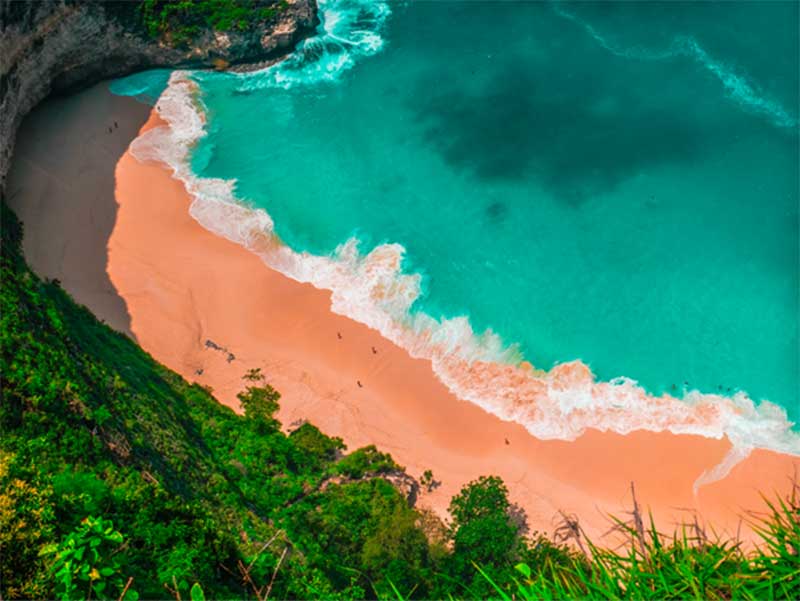
Bali Tides – What’s Going On?
According to this guide, there are over 18,000 islands in Indonesia alone, and the narrow waterways and straights between all of these islands can do crazy things with the tides.
Just like at a river mouth where the tide can cause a tidal bore or river wave, there can be a tremendous amount of water funneling between islands at certain times of the day.
Add to this, seriously deep trenches, and shallow sand banks, the tide can flow like a river at narrow places throughout Indonesia – so in short, it’s a pretty complicated process!
For that reason it’s a good idea to have a tide chart so you know when it’s low tide – you can get one here
What is a Neap Tide?
A neap tide is a period of moderate tides when the difference between high and low tide is the least. Here are some key facts about neap tides:
- Occur twice a month, during the first and last quarter moon phases.
- Cause less drastic tidal fluctuations compared to spring tides.
- This Happens when the Earth, sun, and moon form a right angle, with the sun’s gravitational pull partially canceling out the moon’s.
- During neap tides, the tide range shrinks to its minimum. High tides get lower and low tides get higher.
- Tend to produce smaller surf and less coastal current. Some areas may even appear tidally ‘stuck.’
- Can make it easier for boats to navigate shallow areas and get in/out of ports and marinas.
- May expose more of the intertidal zone, allowing people to explore tidepools.
- Can negatively impact fishing, since smaller tides stir up less food for fish populations.
- Usually occur about 7 days after a spring tide, then repeat about 14 days later.
What is a Spring Tide?
A spring tide is a period of increased tidal range that occurs twice a month during the new moon and full moon. Here are some key facts about spring tides:
- It Happens when the Earth, sun, and moon are aligned, increasing the gravitational forces on the oceans.
- Occur during the full moon and new moon phases, when the moon and sun’s alignment enhances each other’s gravitational pull.
- Produce some of the most extreme tidal fluctuations and largest tide ranges.
- Cause very high and low tides, with a big difference between the highs and lows.
- Tend to create increased currents and tidal streams.
- Provide optimum tidal conditions for surfing big waves and accessing intertidal areas.
- Can increase the risk of coastal flooding in low-lying areas during especially high tides.
- May restrict boat navigation in shallow harbors and estuaries during extra low tides.
- Typically occur about 14 days after a neap tide, as the moon transitions to being full or new again.
Bali Village Tide Times & Tide Charts
Here are the tide charts and tide forecast for Bali and the Mentawais
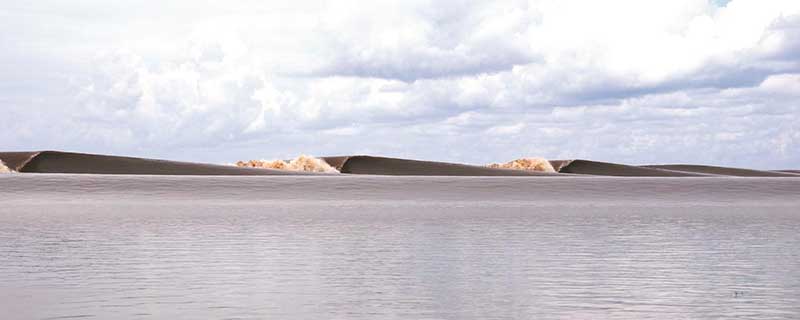
The Bono River Tidal Bore in Sumatra, Indonesia can produce some of the most perfect surfable tidal bore waves ever seen
What Causes Bali’s Tides?
Like most coastal areas, Bali’s tides are caused by the gravitational pull of the moon and sun. When the moon is closest to Bali, it pulls the ocean’s water towards it, causing a high tide.
When the moon is farthest, the water gets pulled away from Bali, creating a low tide.
However, Bali’s tidal patterns are also influenced by its close proximity to the Indonesian throughflow current system. This major ocean current flows between the Pacific and Indian Oceans, transporting huge volumes of water through the channels between Indonesia’s islands. The throughflow currents interact with the tidal flows around Bali to create mixed tides.
Mixing Things Up
Most places on Earth have two high and two low tides per day. But Bali’s mixed tides means it can have either one or two high and low tides over a 24 hour period. Some parts of the island even experience higher high tides and lower low tides due to local conditions.
This tidal mixing makes accurate predictions more difficult.
What To Watch For
Here are some tips for reading Bali’s tides :
- Be aware of whether the tide is rising or falling. So many people get caught out by this.
- Check the slope of the beach – gently sloping beaches will mean the tide can travel in and out much more rapidly.
- If you are surfing, be aware that at dead low tide, reefs and rocks can be completely exposed, and you don’t want to bash yourself on them!
- Early mornings often have the best wind conditions, but not always the best tide – be sure to check your tide table before you hit the waves.
Oh, and remember to consider travel insurance if you are visiting Bali.
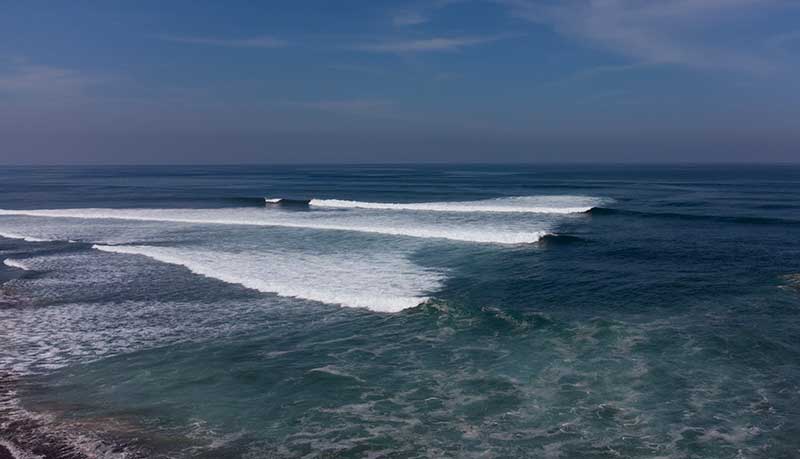
Balian Beach a river mouth break , North west of Kuta and Seminyak
The quality of waves here is greatly affected by the tides
Time Your Sessions
With mixed tides, timing is everything in Bali. Luckily most breaks have good waves regardless of the tide. Do your homework to find spots that work with the tide charts – that’s something I’m not giving away here! But you can find more tips on when to surf different breaks in the guide book.
If the tides aren’t cooperating, be flexible and try a different break. Most importantly, never turn your back on the ocean in Bali – know when to safely paddle out and ride those amazing waves.
Bali’s Unique Tidal Patterns
Bali’s location in the Indian Ocean and its proximity to the equator make its tides distinct. The island experiences a semi-diurnal tide pattern, with two high and two low tides each day.
These tides are influenced by the position of the moon and the sun.
Tides and Balinese Culture
Tides play a profound role in Balinese culture. They are integrated into various rituals, ceremonies, and folklore.
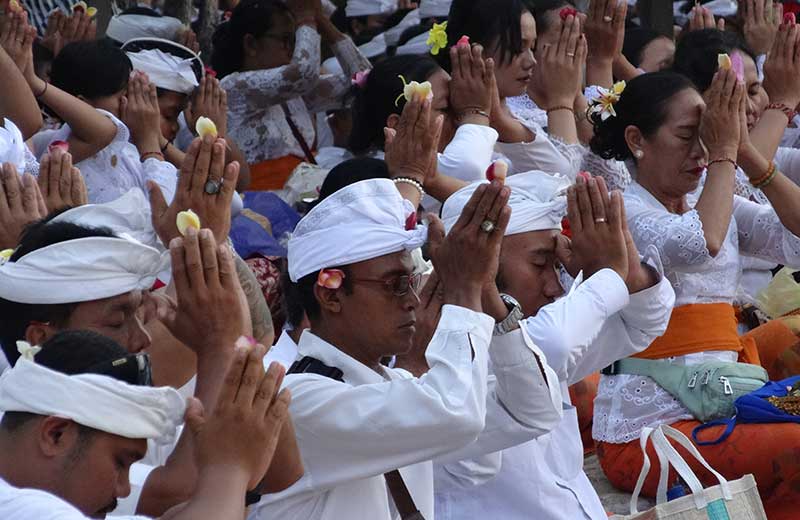
Balinese Hindu people praying in a Melasti ceremony on Kuta beach.
this ceremony always take place near the ocean, the water is believed to have the power to purify and cleanse.
Marine Life and Ecosystems
Bali’s tidal zones are home to a rich diversity of marine life, including colorful corals, fish, and unique sea creatures.
During low tide, tide pools provide an up-close view of these fascinating ecosystems, making it a paradise for nature enthusiasts.
Tidal Predictions and Resources
Travelers can access tidal predictions through various resources, such as local tide charts, websites, or smartphone apps.
It’s advisable to consult these resources before planning your beach activities to make the most of your trip.
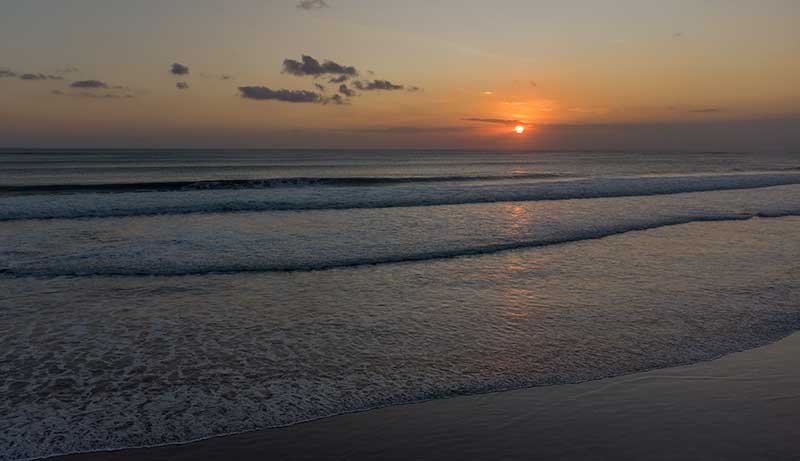
Safety and Tides
As the water is very warm in Bali, you probably wont need a wetsuit unless youre up and on the dawn patrol then a 1mm vest could come in handy to ward off the rare wind chill factor.
So the tides and reef are probably the two main safety factors you need to consider.
And when the tide is low, the reef is more exposed and more dangerous.
Understanding the tides is crucial for safety. Bali’s beaches can experience a strong tidal push during certain conditions, so try to be aware of what the tide is doing before you hit the beach.
To Sum Up
There is a lot to consider with the nuances around the tides in Bali, but the main thing to remember is to just be aware of the tides and how they impact the beach and surroundings.
With this in mind, you’ll have a worry-free trip to the amazing place of Bali and the surrounding islands.


0 Comments